Binh Tay Market: The Historical and Cultural Heart of Saigon’s Chinatown
Tucked away in the heart of Cho Lon, Ho Chi Minh City’s vibrant Chinatown, Binh Tay Market stands as a living testament to the area’s rich history and enduring traditions. More than just a place for commerce, this bustling marketplace offers a fascinating glimpse into local culture, daily life, and the enduring spirit of a community that has thrived for generations. For travelers joining Saigon Taste Tours, a visit to Binh Tay is an essential stop to experience the authentic rhythm of Saigon’s Chinatown.
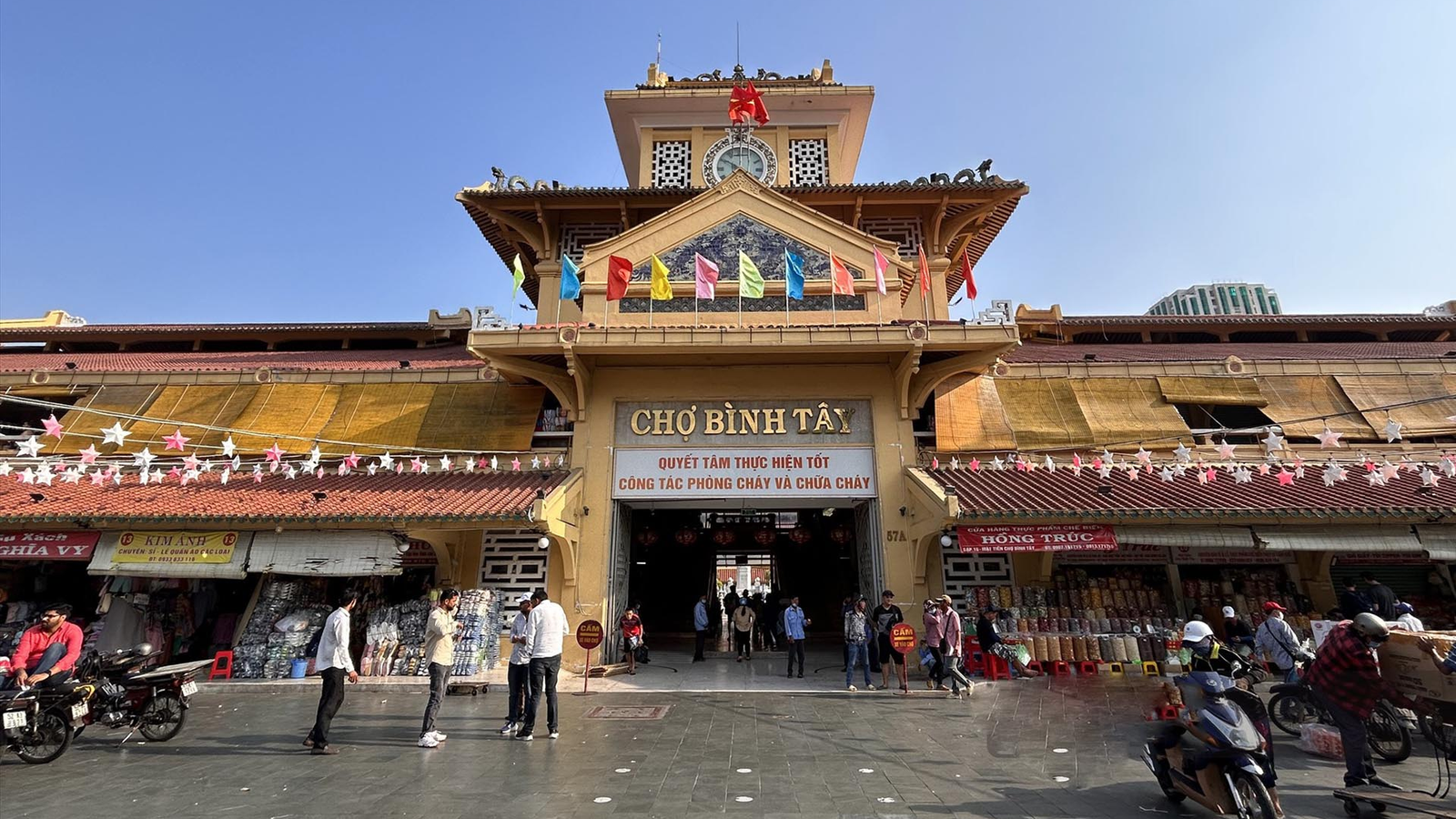
History of Binh Tay Market
Many first-time visitors are surprised that there is no market officially called Cho Lon. Instead, the most famous market here is Binh Tay Market, sometimes referred to as New Cho Lon. This name replaced the original Cho Lon Market, which no longer exists today.
The Cho Lon area took shape in the 17th century, when Chinese settlers fleeing the Qing Dynasty established Minh Huong village in the South. By 1778, the community expanded as more migrants from Cu Lao Pho (Bien Hoa) sought refuge from the Tay Son army. Over time, bustling Chinese markets emerged, eventually forming Cho Lon—an economic powerhouse of southern Vietnam.
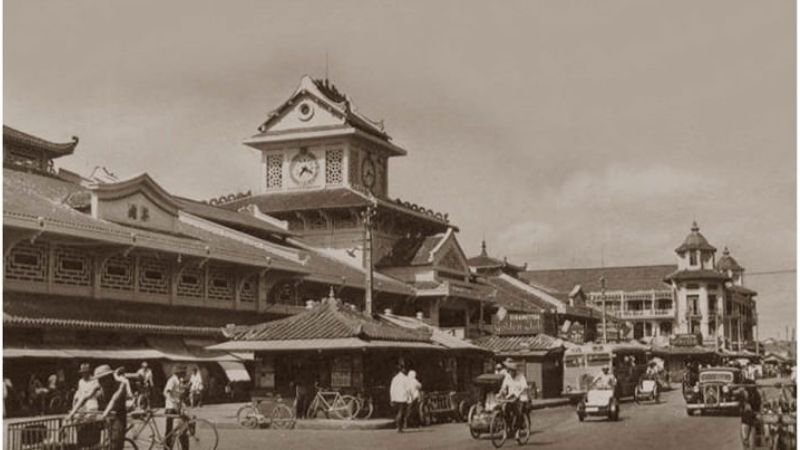
When the French occupied Cochinchina in 1859, they recognized Cho Lon’s economic importance. On June 6, 1865, Cho Lon officially became a city, and its market was renamed Cho Lon (old). By the 1880s, another market, Binh Tay Market (old), which was built at My Tho Wharf, thriving thanks to convenient water and road connections.

By the early 20th century, Cho Lon’s commercial activity had grown rapidly, making the old market facilities inadequate. At this time, Quach Dam, a wealthy and influential Chinese merchant, envisioned a new, larger, and more modern marketplace. Using land he had previously acquired, he financed the construction of the new Binh Tay Market, which was inaugurated on September 28, 1928.
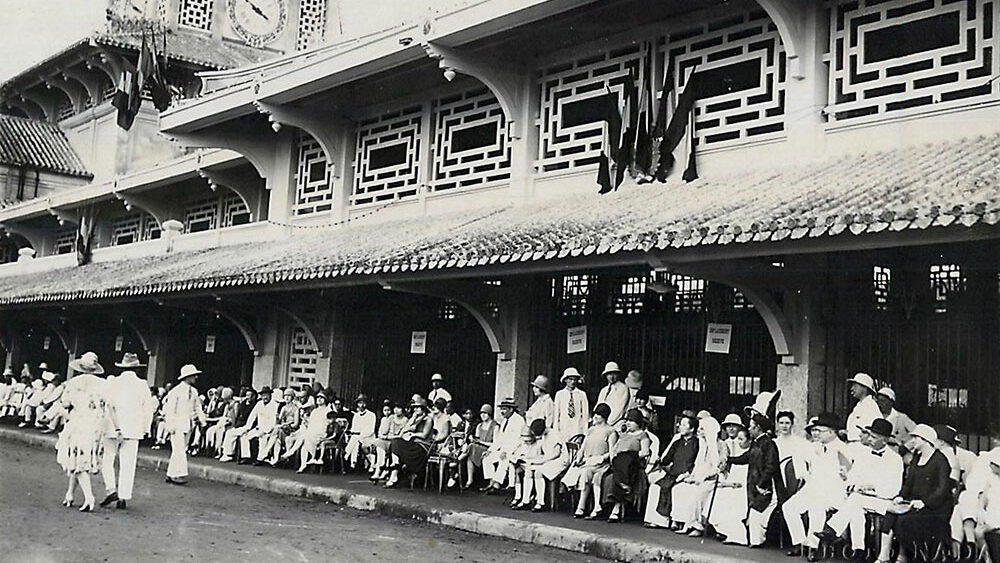
Although designed by a French architect, the market showcased distinct East Asian architectural features, reflecting both cultural pride and commercial ambition. Sadly, Quach Dam passed away in 1927, before seeing his project completed. To honor him, his family and the local community later placed a bronze statue of him in the market’s courtyard in 1930.
Architecture of Binh Tay Market
A Blend of French Design and Asian Symbolism
Binh Tay Market, spanning 25,000 square meters with a rectangular floor plan, is a striking blend of French colonial architecture and traditional Asian design. At its heart stands a central tower with four clock faces, adorned with the symbolic motif of “two dragons facing the pearl”, an image rooted in Eastern feng shui.

The market’s roof is covered with yin-yang tiles, which not only enhance ventilation and keep the space cool but also highlight Eastern aesthetics. Adding to its charm, the gently curved roof corners resemble the architecture of East Asian temples, creating a harmonious balance between cultural heritage and practical functionality.

Statues and Legacy of Quach Dam
In 1930, a statue of Quach Dam was ceremonially placed in the market. Cast in black bronze in France, it depicted him in Qing dynasty attire, holding a map and surrounded by dragons and unicorns. The statue stood for 45 years before being moved to the Fine Arts Museum in 1975. Later, traders at the market created a smaller bust in his honor, which still remains a place of worship today.
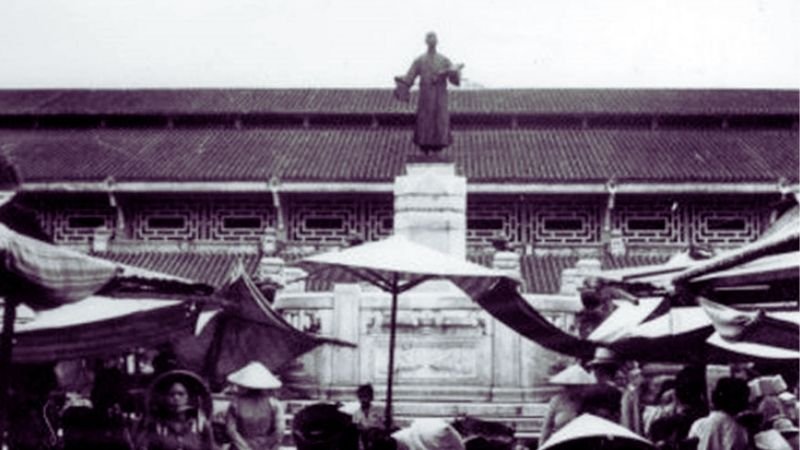
Over decades of heavy use, Binh Tay Market became degraded. Renovations took place in 1992 and 2006, but the most extensive restoration occurred between 2016 and 2018, with funding contributed by local traders. The renovation cost 104 billion VND and carefully restored the market to its original 1928 design, while adding modern features like a 172 m² basement. In November 2018, Binh Tay reopened with 1,446 stalls, once again thriving as a central hub for commerce.

Binh Tay Market Today – A Bustling Wholesale Hub
Located in District 6, Binh Tay Market is one of the largest wholesale markets in Ho Chi Minh City. It supplies goods not only across Vietnam but also to neighboring countries like Laos and Cambodia. The market is surrounded by four lively streets—Thap Muoi, Le Tan Ke, Tran Binh, and Phan Van Khoe—each lined with busy shops and vendors.

Today, Binh Tay Market is more than just a trading hub. It has become a popular tourist attraction, drawing both local and international visitors who come to admire its history, architecture, and vibrant atmosphere.

Travel Tips to Binh Tay Market – How to Visit and What to Expect
Visiting Binh Tay Market in Saigon’s Chinatown is a must for both cultural exploration and shopping. Here’s a detailed guide to make your visit smooth and enjoyable:
How to Get There
- From Ben Thanh Market (District 1): Binh Tay Market is about 6 km from the city center. You can take a taxi or Grab motorbike/car for roughly 15–20 minutes depending on traffic. Public buses are also available, including routes 03, 04, 08, which stop near District 6.
- From Tan Son Nhat Airport: The market is about 8–10 km away. A taxi or Grab ride takes around 20–25 minutes, depending on traffic. For budget travelers, several airport shuttle buses drop off near District 1, from where you can continue by bus or taxi.
Best Time to Visit
- Opening hours: Most stalls open around 6:00–7:00 AM.
- Closing hours: Shops generally close by 5:00–6:00 PM, but some eateries and souvenir stalls remain open later.
- Tip: Arrive in the morning for fresh produce and wholesale shopping, or in the late afternoon for a vibrant, bustling atmosphere.
Shopping Advice
- Price range: Binh Tay Market offers products from affordable daily goods to premium souvenirs. Wholesale items such as spices, dried seafood, and textiles are priced lower than tourist shops.
- Bargaining: Haggling is expected. You can often negotiate up to 50% off the initial asking price, especially for multiple items.
- Avoid scams: Be aware of counterfeit products, overpricing, or hidden fees. Always check items and ask for prices clearly before purchasing.
Amenities and Facilities
- Money exchange: Several small currency exchange stalls are available, but it’s safer to use banks or official exchange services nearby.
- Food and snacks: The market is a great place to try local street food such as Banh Cam, dried fruits, and traditional sweets. Small eateries and cafes are scattered around the perimeter.
- Souvenirs and gifts: From Vietnamese handicrafts, textiles, tea, and spices to small trinkets and postcards, Binh Tay Market offers a wide variety of gifts for visitors.
- Shopping convenience: Wide aisles and clearly labeled sections make it easier to navigate, while some stalls provide packing services for larger purchases.
Keep your belongings secure, as crowded markets are prime areas for pickpocketing. Plan your time wisely, allowing at least 2–3 hours to explore, shop, and sample food.
Join Saigon Taste Tours to experience this historic marketplace firsthand, where every corner tells a story of resilience, trade, and cultural fusion.
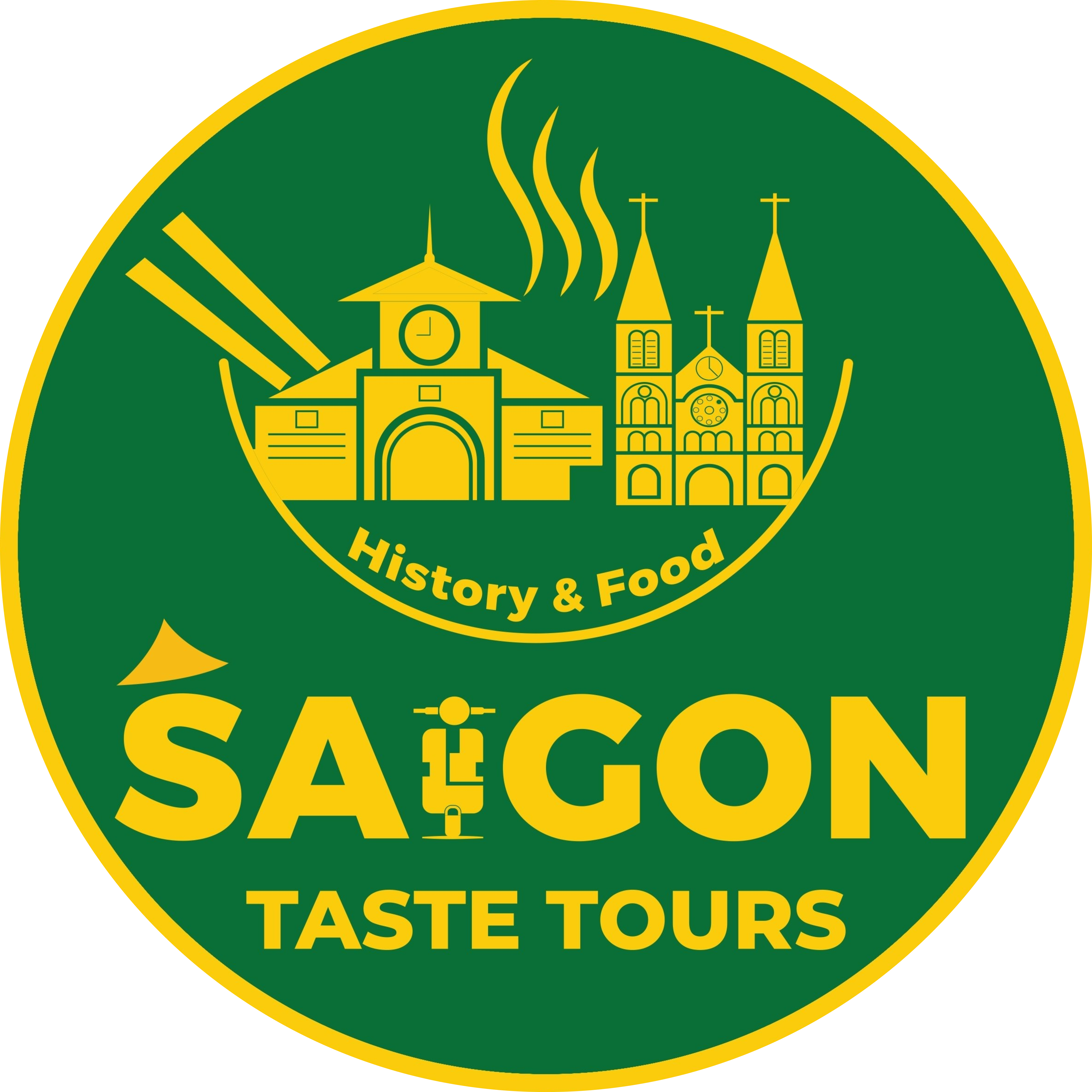

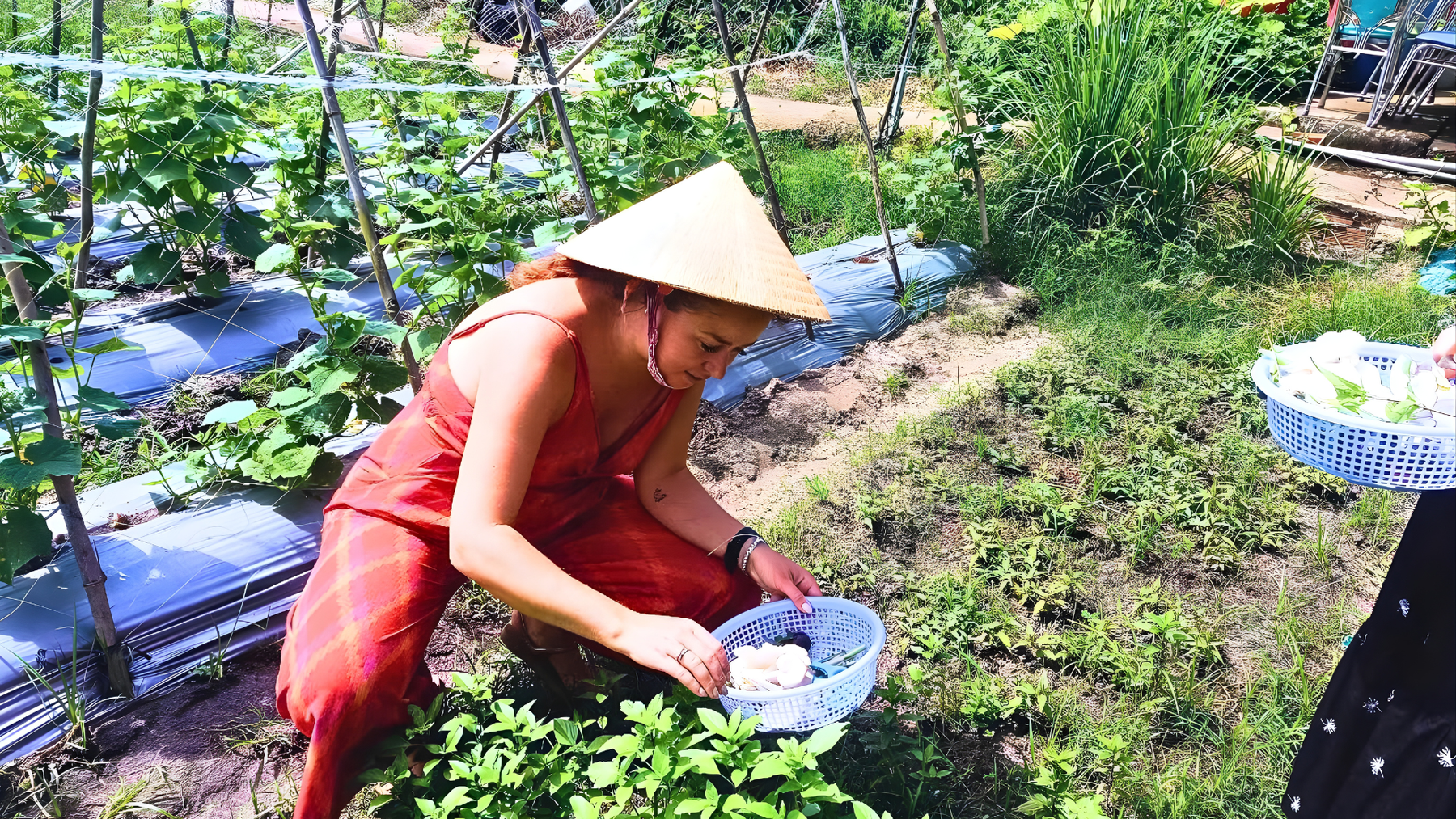
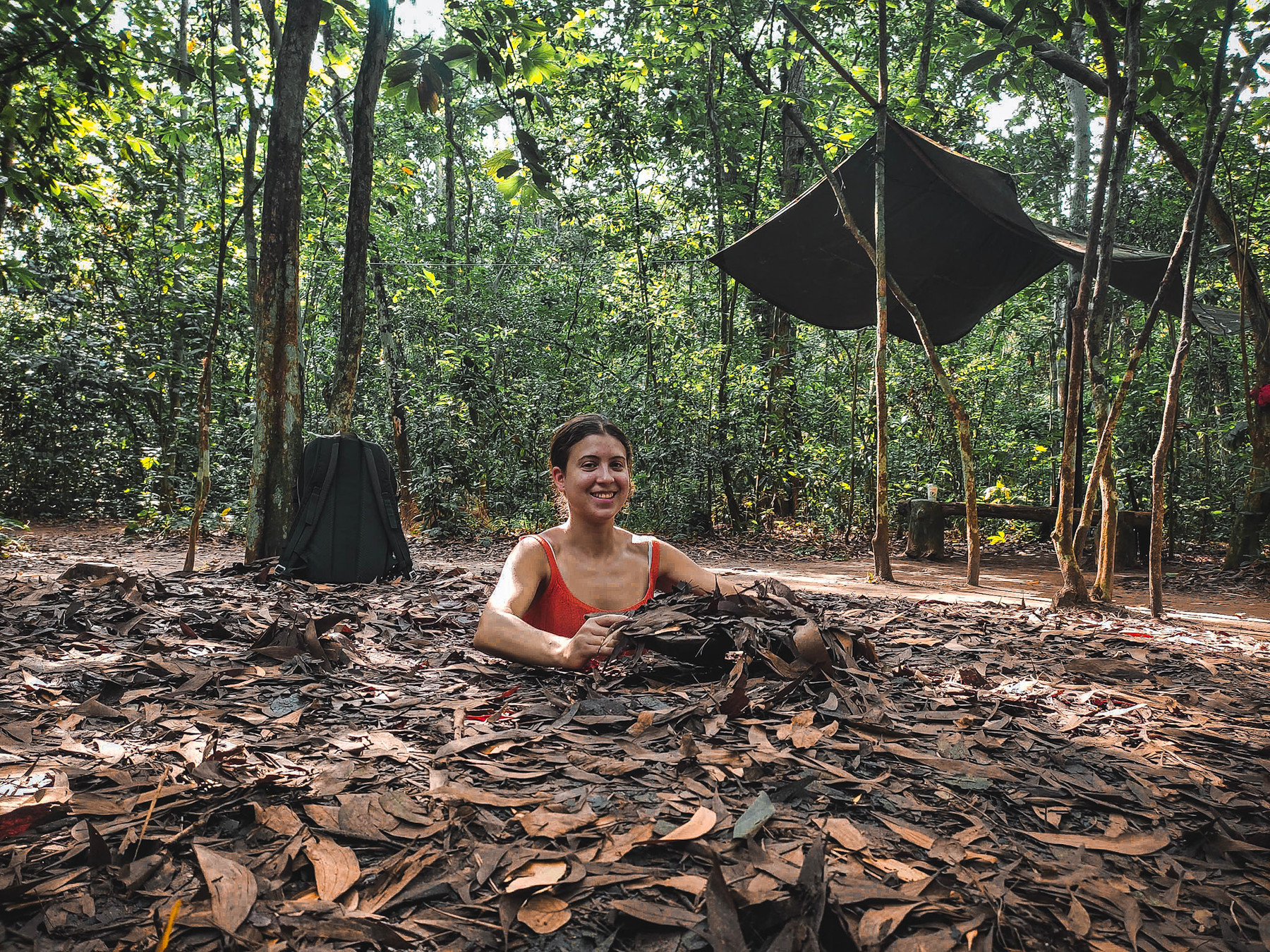





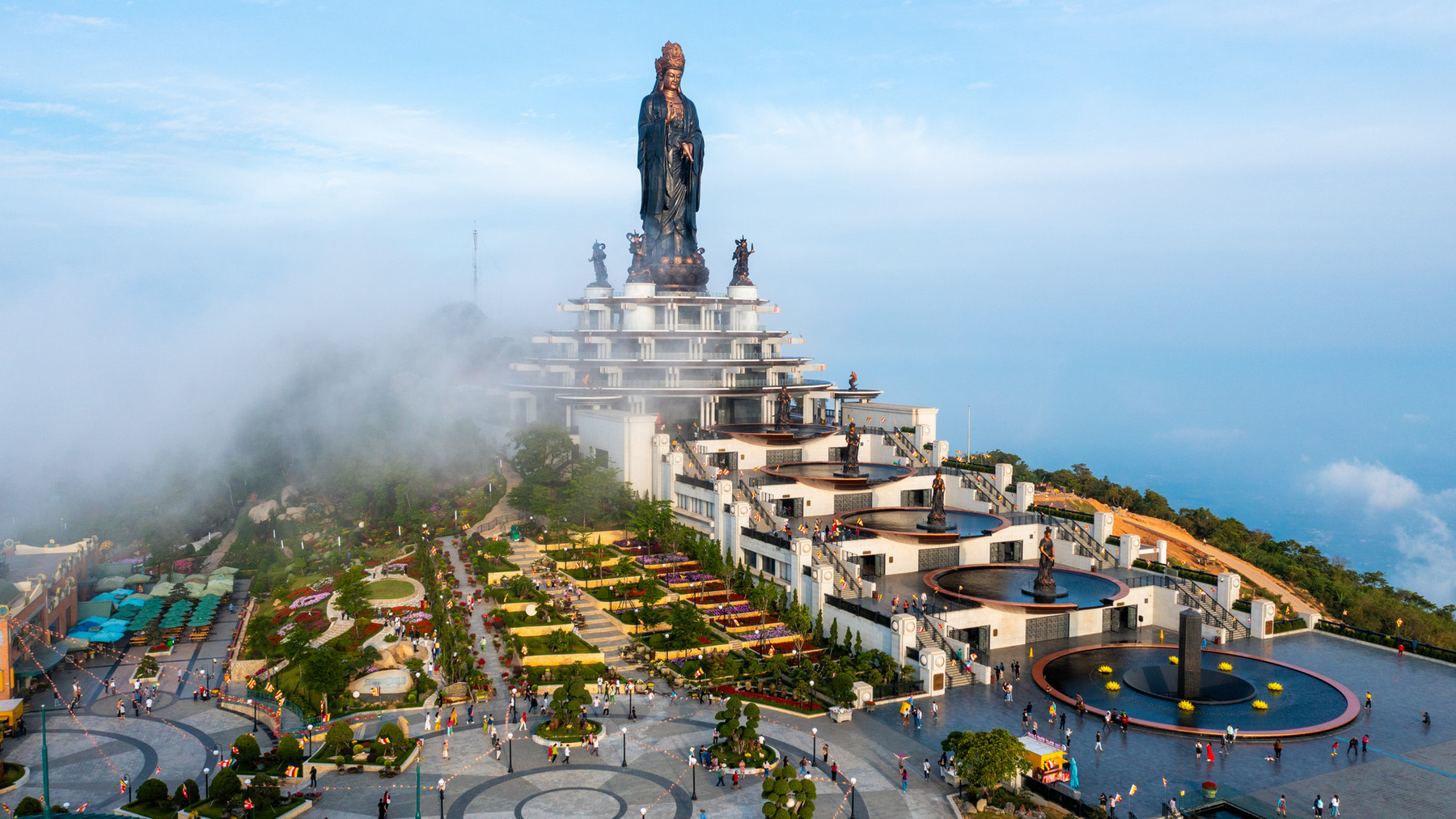
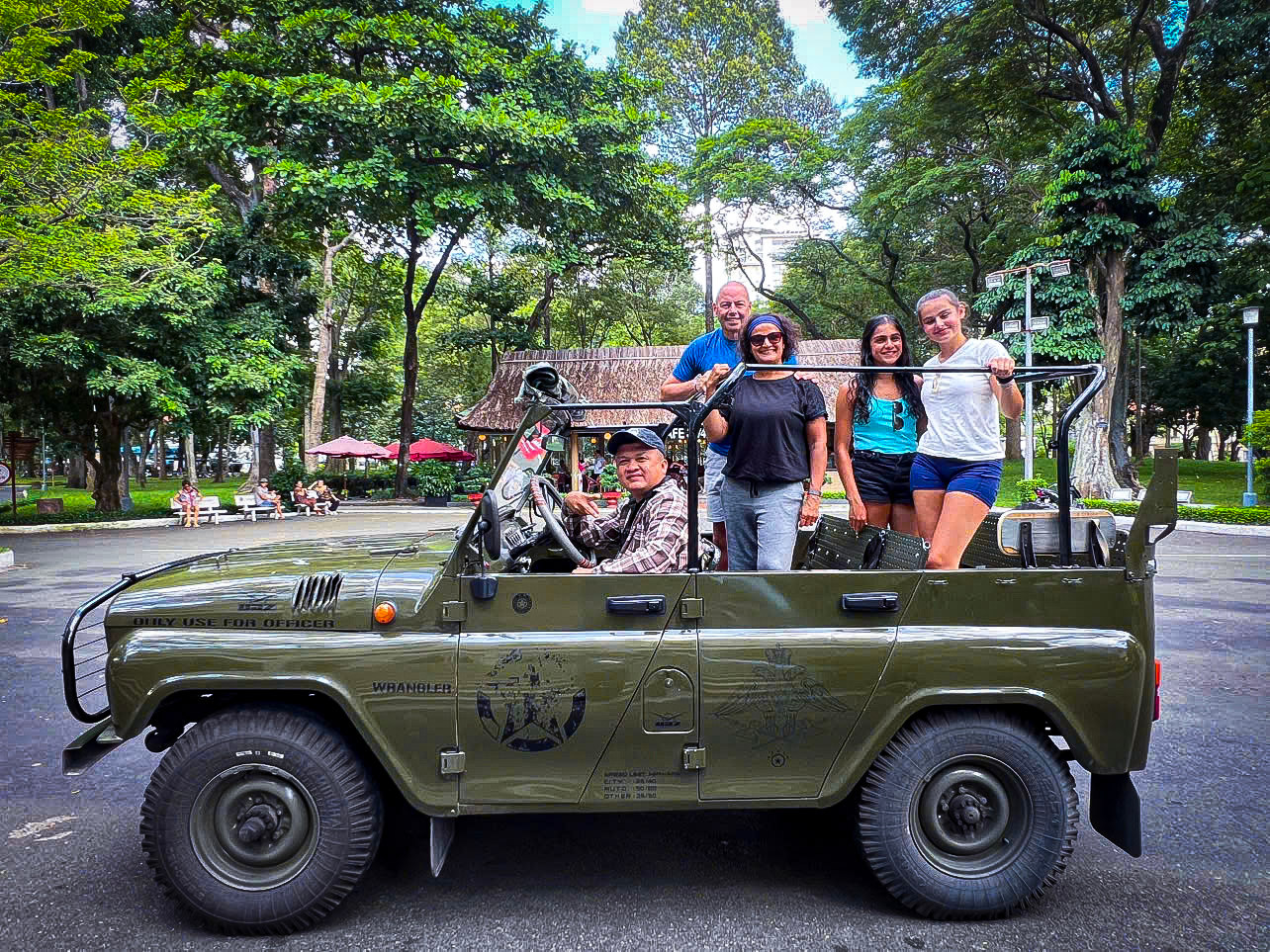
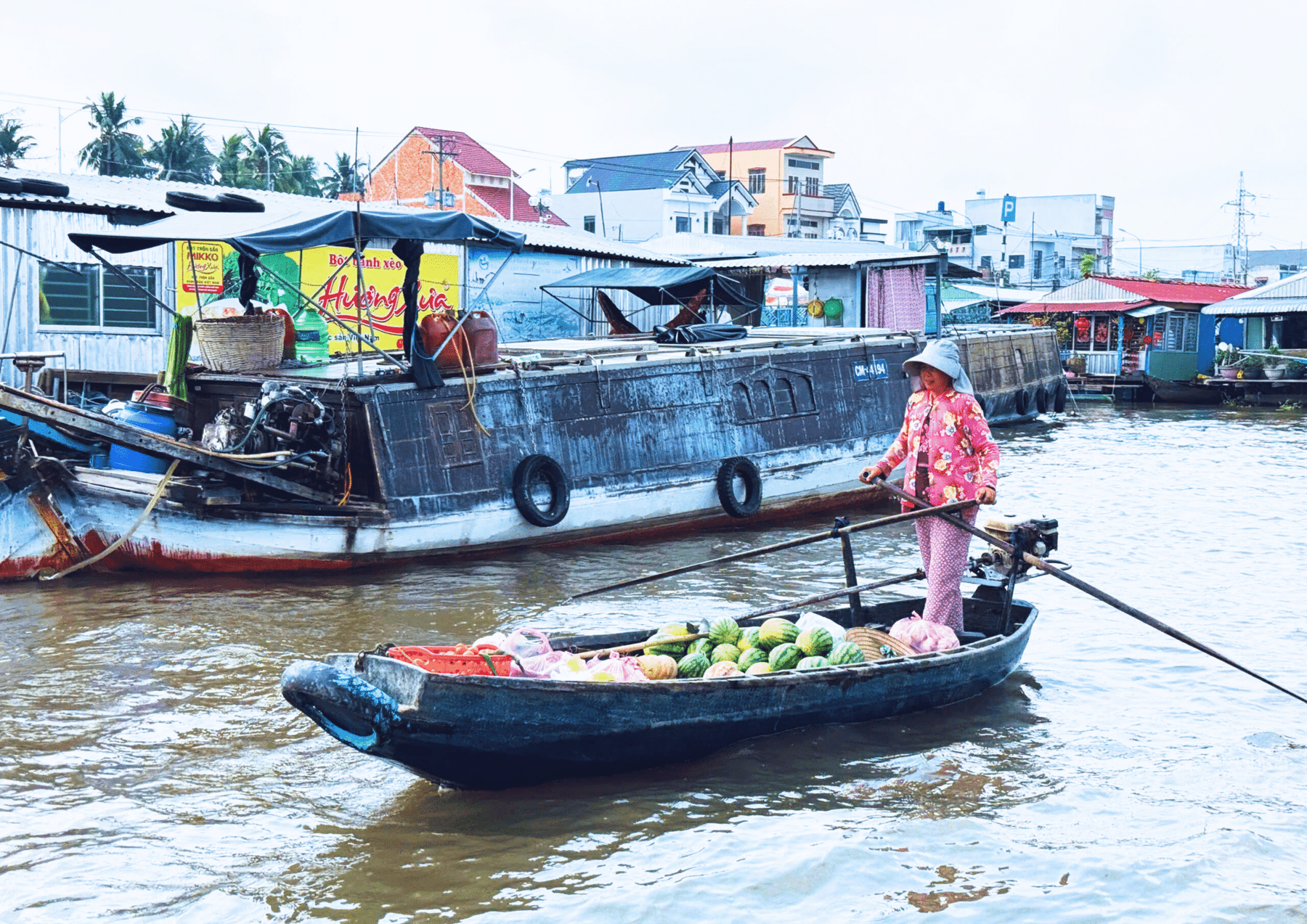

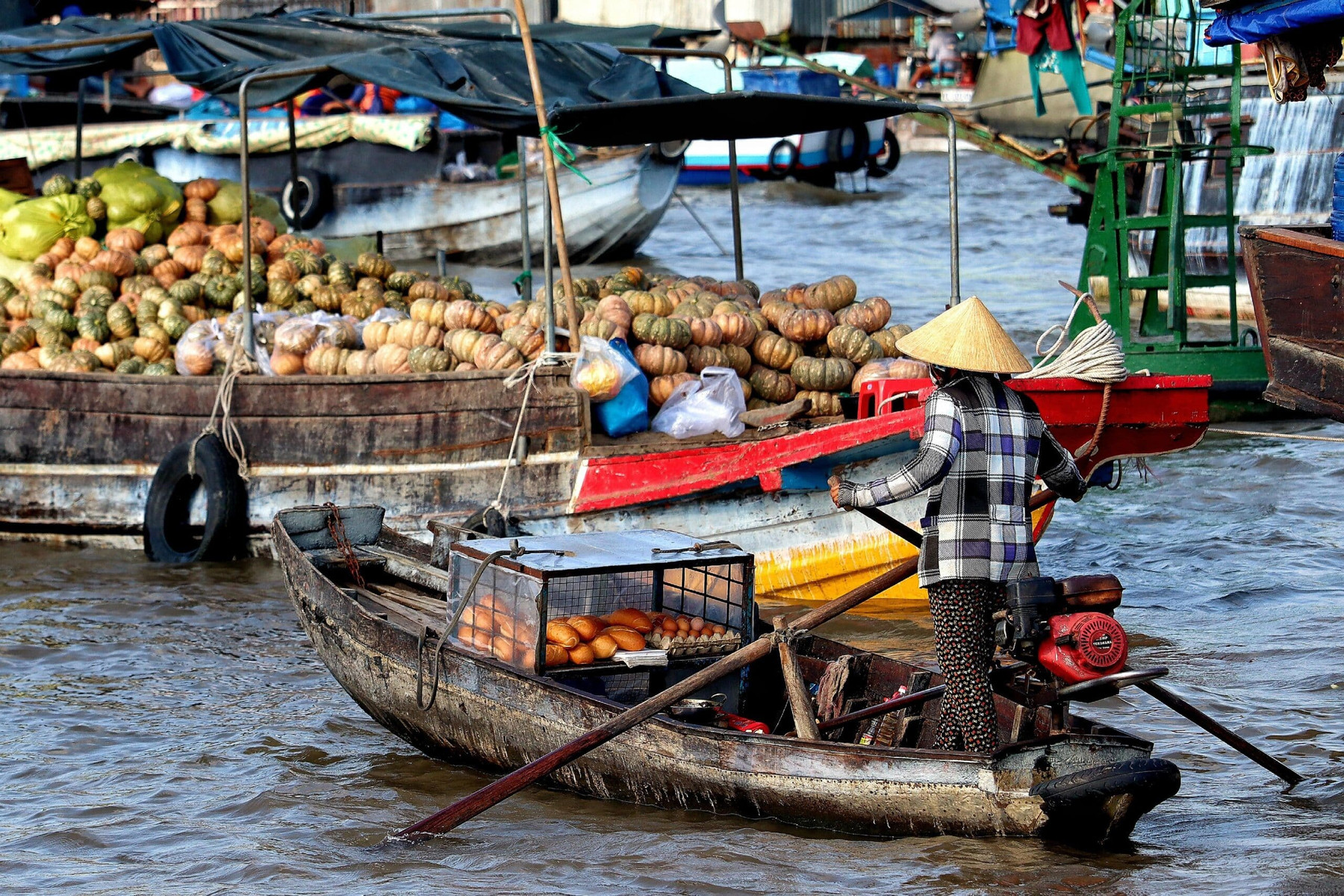

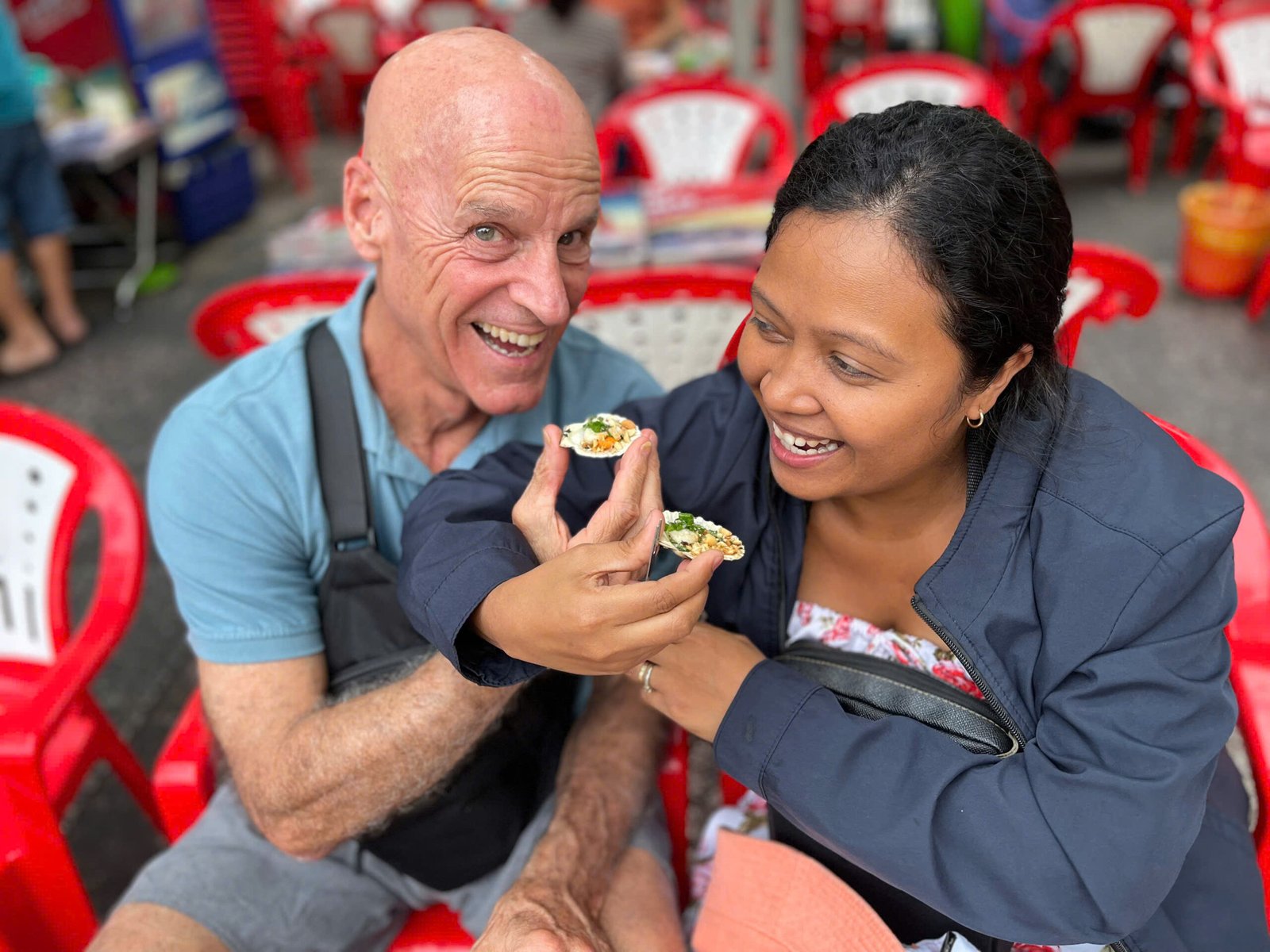

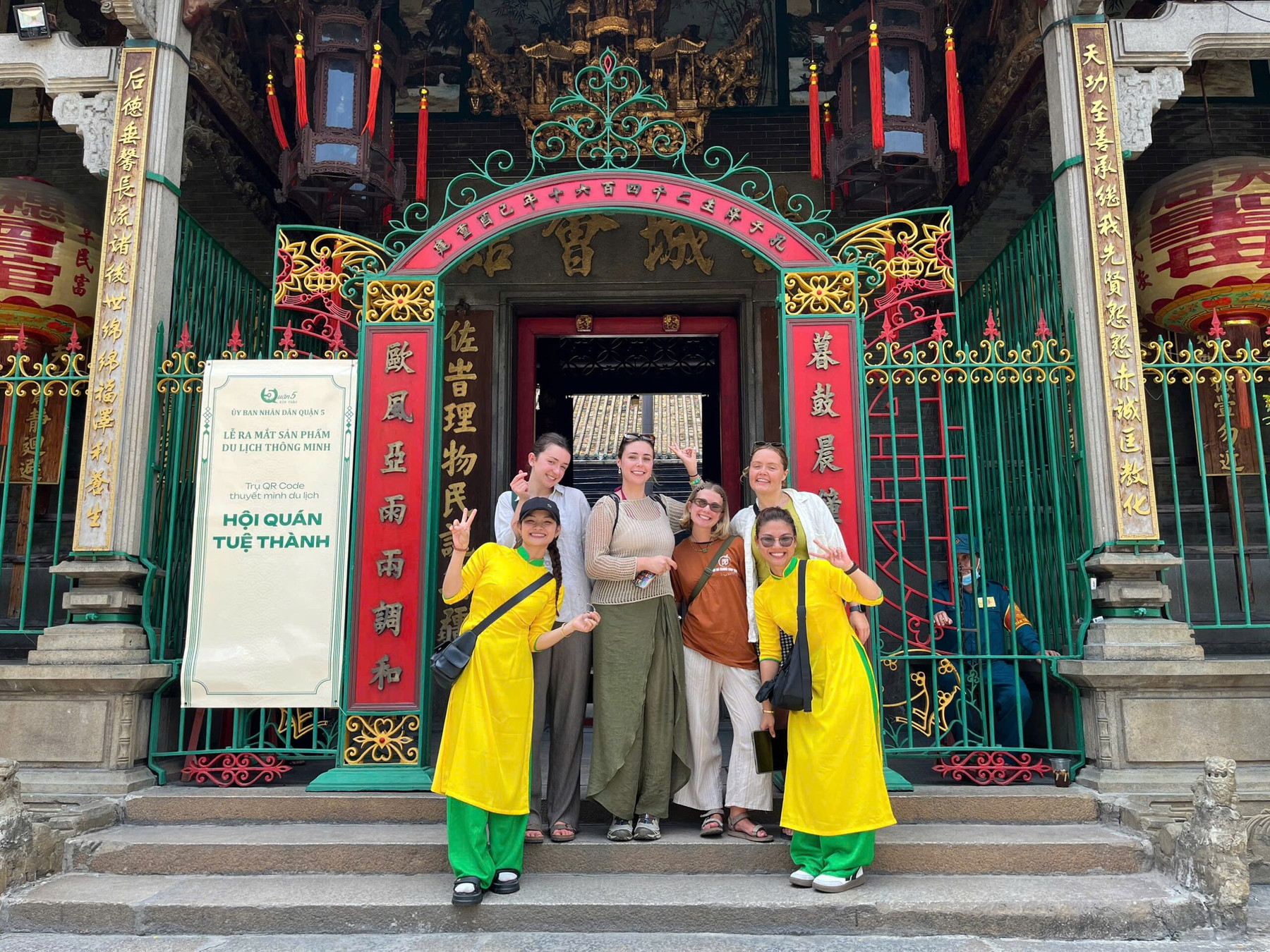


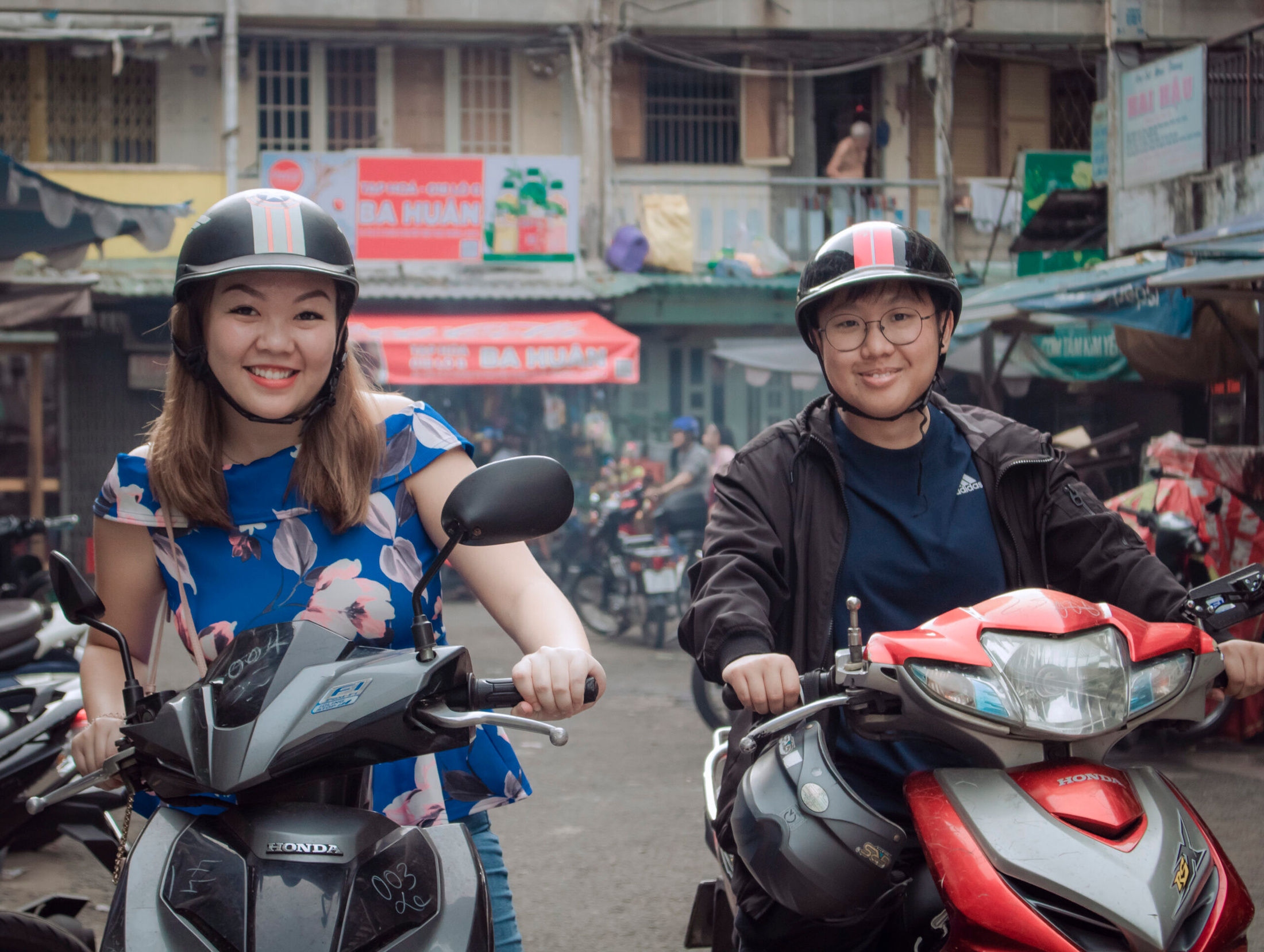
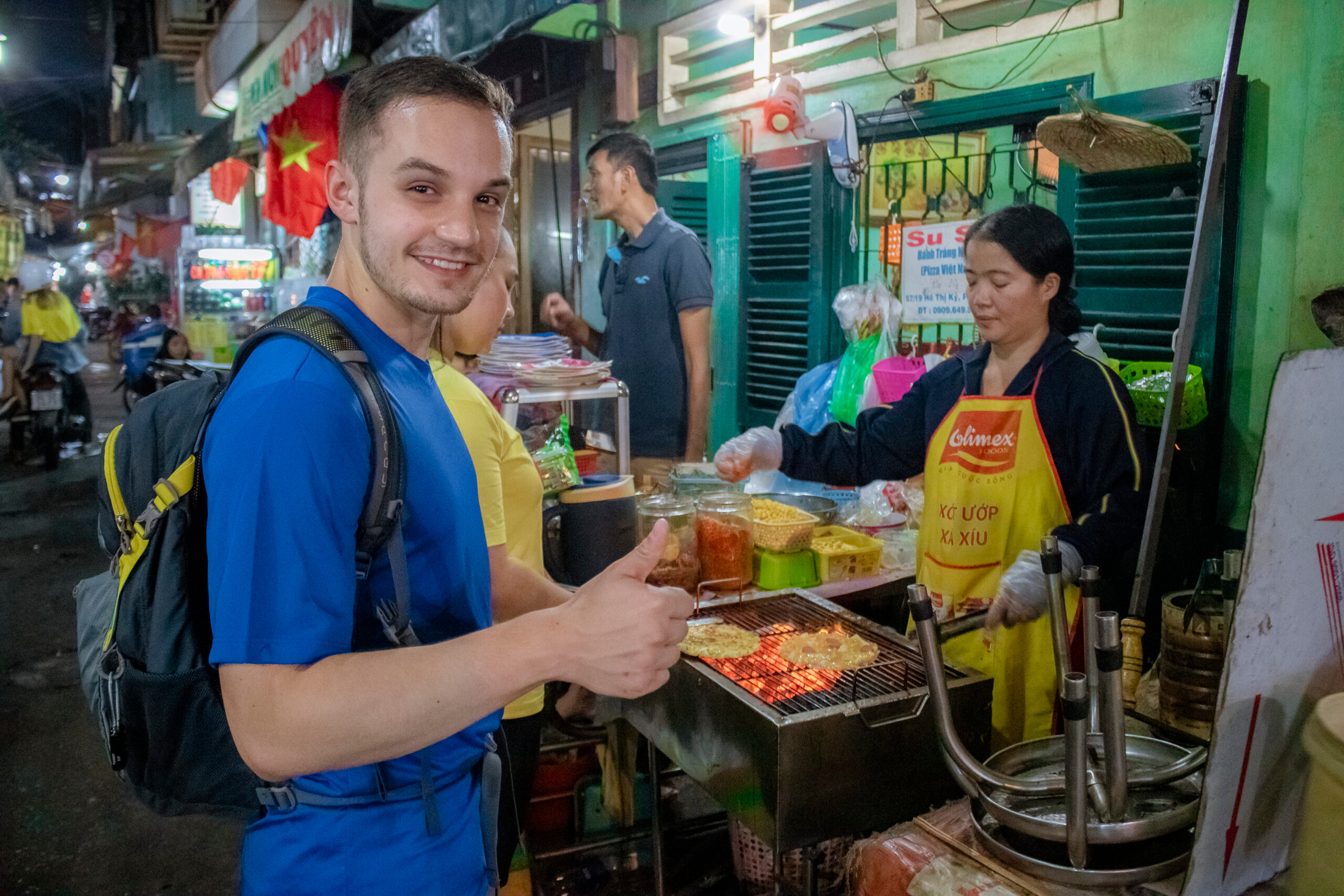



Leave a Reply